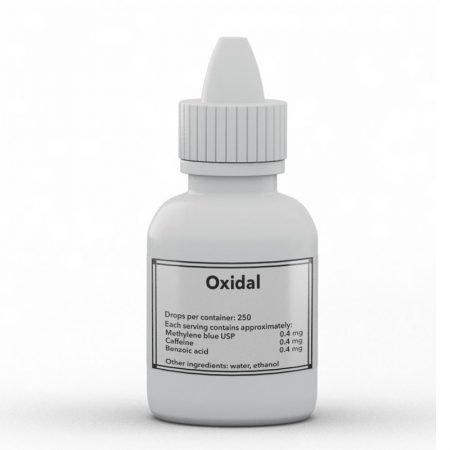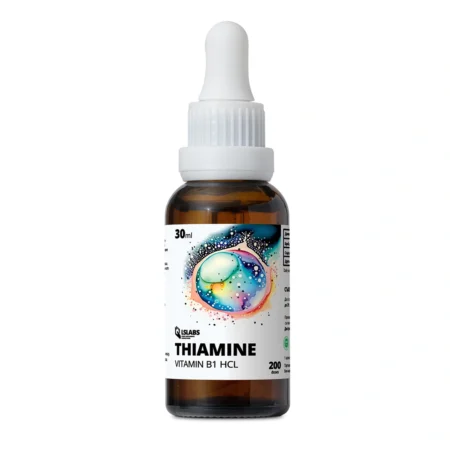Заглавието говори само за себе си, но авторите на проучването правят злощастното и неудачно заключение, че макар и да можем да възстановим хрущяла, не можем да възстановим крайниците си. Е, многобройните изследвания върху животни, които публикувах в последния материал, не са съгласни с това и сочат както високия метаболизъм, така и прогестерона като мощни регенеративни фактори, които може да са в състояние да стимулират израстването на крайниците при организми, които не са саламандър, включително и при хората.
https://dev.biologists.org/content/143/24/4582
https://www.cell.com/cell-reports/fulltext/S2211-1247(18)31573-0
http://blogs.discovermagazine.com/d-brief/2018/11/06/frogs-show-possibility-regrow-human-limbs/#.XcMiYZJKiUk
“…Millions of people live with amputated limbs that are gone forever. But that might not be the case in the future. For the first time, scientists have shown that adult frogs can regrow amputated legs. They say the approach can work in humans, too. “There is no reason that human bodies can’t regenerate,” said Tufts University biologist Michael Levin, who led the new research.”
“…The trigger the team found is progesterone, the sex hormone involved in the female menstrual cycle, pregnancy and breastfeeding. The scientists applied the compound to frogs’ amputated back legs with a wearable bioreactor device for 24 hours. Then they watched as the limb regenerated. Frogs that did not receive the progesterone treatment developed cartilaginous spikes at the amputation site, whereas ones that wore the hormone delivering bioreactor for one day regrew a paddle-shaped appendage. Differences between the frogs were visible within a few weeks, Levin and team revealed today in the journal Cell Reports. Within about six months the regenerated limbs stopped growing, but the development had progressed to the point where under typical growth, fingers and toes appear. The regrown limbs had increased bone volume and density, bundles of well-organized nerve fibers and major blood vessels — all of which translated to frogs with regrown limbs that could move and swim with activity levels that were indistinguishable from frogs with intact legs. The research shows that spurring regeneration in vertebrate animals is possible and paves the way for similar work in mammals and eventually humans. “We may be able to induce the body to do what it does best, build complex organs,” Levin said. “The potential scope is huge.”
Новото проучване по-долу добавя възстановяването на хрущяла към списъка на „невъзможните“ постижения, на които са способни нашите тела, което придава още по-голяма достоверност на твърденията за възстановяване на крайниците от горните проучвания. Забавно е, че в проучването се признава, че израстването на върховете на пръстите е добре познато явление при децата, но се твърди, че това не е възможно при възрастните поради „старостта“ на хрущялите и костите им.
https://www.jpedsurg.org/article/S0022-3468(74)80220-4/pdf
В проучването се отбелязва, че колкото по-далеч от торса се намира определен увреден придатък, толкова той е „по-млад“ и по-способен на регенерация. Те не дават обяснение за тази разлика във „възрастта“ на костите/хрущялите в зависимост от местоположението, но едно от възможните обяснения е по-високото ниво на синтез на CO2 и младежки стероиди в крайниците. Това съвпада доста добре с регенеративните ефекти на прогестерона и повишения метаболизъм, демонстрирани от изследванията, изброени по-рано в поста. Ако авторите на настоящото проучване бяха направили малко повече преглед на литературата преди публикуването, можеше да се получи едно хитово проучване, което да даде единно обяснение на регенеративната способност на почти всяка тъкан в човешкото тяло, при условие че метаболизмът се поддържа висок – т.е. на младежките нива, наблюдавани при тези деца с израстващи върхове на пръстите. Е, може би ще изпратя имейл на авторите, за да го обсъдим допълнително. Като се има предвид, че те не са цитирали работата си, може би такова хитово проучване е просто въпрос на запознаване на тези учени един с друг.
https://advances.sciencemag.org/content/5/10/eaax3203
https://www.cnn.com/2019/10/10/health/humans-salamander-regenerate-intl-hnk-scli-scn/index.html
“…Humans may not be able to regrow amputated limbs like salamanders can — but we do have a “salamander-like” ability to regrow damaged cartilage, a new study has found. The study, published Wednesday in the journal Science Advances, found that “cartilage in human joints can repair itself through a process similar to that used by creatures such as salamanders and zebrafish to regenerate limbs,” according to the press release by Duke Health, which helped lead the research. These findings could open the door to new treatments for joint injuries and diseases like osteoarthritis — and perhaps even lead to human limb regeneration one day. Salamanders, axolotl, and other animals with regenerative abilities have a type of molecule called microRNA, which help regulate joint tissue repair. We have microRNA too, but our mechanism for cartilage repair is stronger in some parts of the body, the study found. For example, the microRNA molecules are more active in our ankles, and less active in our knees and hips.”
“…The study also found that the “age” of cartilage — meaning whether proteins have changed structure or undergone amino acid conversions — depends on its location in the body. Cartilage is “young” in the ankles, “middle-aged” in the knees, and “old” in the hips. This correlation lines up with how animals regenerate fastest at the furthest tips of their bodies, like tails or the ends of legs. These factors — the activity level of microRNA and the age of cartilage — explain why ankle injuries heal faster than knee and hip injuries, and there are fewer instances of arthritis in the ankle compared to the other two areas. Scientists have known for years that humans do have some regenerative capabilities — when children’s finger tips are amputated, the tip can regenerate when treated correctly. But it was widely believed that these capabilities were limited, and that humans were “unable to counteract cumulative damage” to their joints, the study said — which these new findings disprove.”
“…”We believe that an understanding of this ‘salamander-like’ regenerative capacity in humans, and the critically missing components of this regulatory circuit, could provide the foundation for new approaches to repair joint tissues and possibly whole human limbs,” Kraus said.”
Източник:
- Колко пресни портокала са ви необходими, за да изчистите черния си дроб от мазнини?Ако имате омазнен черен дроб, включването на пресни портокали в диетата ви може да ви помогне да възстановите здравето на черния си дроб. Това става ясно от малко италианско проучване. Италиански биохимици, свързани с Националния институт по гастроентерология – IRCCS Saverio de Bellis, набират 62 души с метаболитна дисфункция, свързана със стеатозна болест на черния… Колко пресни портокала са ви необходими, за да изчистите черния си дроб от мазнини? weiterlesen
- Хроничният стрес понижава допамина и причинява психични заболяванияДоказателствата за ролята на хроничния стрес в почти всички здравословни състояния, за които лекарите имат наименование, продължават да се трупат. За съжаление, дори в това последно проучване учените продължават да настояват, че има някаква мистериозна и неизмерима разлика между хроничния стрес, който „увеличава риска“ и „причинява“ патология. Същите тези учени обаче нямат проблем да заявят… Хроничният стрес понижава допамина и причинява психични заболявания weiterlesen
- Естрогенът и кортизолът, а не андрогените, потискат имунитетаВ биологията на възпроизводството има една много известна теория, която все още се смята за доминираща в тази област. А именно, че мъжете трябва да приемат баланса между нивата на андрогените и имунитета. Тя е известна като хипотеза за увреждане на имунната компетентност (ICHH). По-високите нива на андрогените, според теорията, позволяват на мъжкия да н(физически)… Естрогенът и кортизолът, а не андрогените, потискат имунитета weiterlesen
- Инхибирането на ароматазата (за намаляване на естрогена) може да доведе до лечение на рак на стомаха.Още едно проучване, което доказва причинно-следствената връзка между естрогена и рак, смятан за хормононезависим. Ракът на стомаха е една от водещите причини за смърт от рак в световен мащаб и особено в азиатските страни. Счита се, че е много труден за лечение и повечето пациенти се диагностицират в стадии, в които операцията не е подходяща.… Инхибирането на ароматазата (за намаляване на естрогена) може да доведе до лечение на рак на стомаха. weiterlesen
- Потиснатият имунитет, а не вирусите (HPV), може да е причина за рака на кожатаНаскоро публикувах няколко теми, свързани с имуносупресията и рака. Ето две от тях, които дават добър преглед и свързват имуносупресивните ефекти на ПНМК, естрогена и кортизола със защитните ефекти на витамин А, Е, D, прогестерона и др. https://xenobg.com/pnmk-sa-imunosupresivni-a-gladuvaneto-i-ogranichavaneto-na-proteinite-veroyatno-nanasyat-oshte-po-golyama-vreda/ https://xenobg.com/vitamin-d-mozhe-da-spre-rastezha-na-melanoma/ Въпреки натрупващите се доказателства, че именно потиснатата имунна система позволява на рака да се образува и… Потиснатият имунитет, а не вирусите (HPV), може да е причина за рака на кожата weiterlesen
- Витамин К може да лекува левкемияОще едно чудесно проучване, което демонстрира както терапевтичния потенциал на витамините, така и метаболитния/редокс характер на рака. Както споменах в някои от моите подкасти, витамин К2 (MK-4) понастоящем е в процес на клинични изпитвания за лечение/предотвратяване на редица различни видове рак, особено рак на черния дроб и т.нар. миелодиспластични състояния, които обхващат всички видове рак… Витамин К може да лекува левкемия weiterlesen
- Витамин D може да спре растежа на меланомаСтрахотно проучване, което потвърждава неотдавнашната ми публикация за това, че избягването на слънчевата светлина е толкова вредно за здравето, колкото пушенето на кутия цигари на ден. В края на краищата, без слънчева светлина няма да има голям синтез на витамин D, а допълнителният прием не е ефективен за много хора поради различни фактори, включително наднормено… Витамин D може да спре растежа на меланома weiterlesen
- Повишеният синтез на мастни киселини (FAS) е просто признак за недостиг на кислород / нисък метаболизъмСамо една бърза публикация за проучване, което дава представа за това как повишеното окисление на мастните киселини може „парадоксално“ да доведе и до повишен синтез на мастни киселини, като по този начин води до порочен кръг, който най-често се наблюдава при диабет и рак. В една от последните ми публикации се обсъждаше много по-ново проучване,… Повишеният синтез на мастни киселини (FAS) е просто признак за недостиг на кислород / нисък метаболизъм weiterlesen
- ПНМК са имуносупресивни, а гладуването и ограничаването на протеините (вероятно) нанасят още по-голяма вредаКакто споменах в един от първите подкасти с Дани Роди, ролята на ПНМК като имуносупресори всъщност е добре позната в индустрията за трансплантации на органи. В някакъв момент през 80-те години на миналия век дори е имало търговски продукт на основата на ПНМК, продаван на болниците като част от така нареченото решение за „пълно парентерално… ПНМК са имуносупресивни, а гладуването и ограничаването на протеините (вероятно) нанасят още по-голяма вреда weiterlesen
- Хората имат подобна на саламандър способност да възстановяват хрущялиЗаглавието говори само за себе си, но авторите на проучването правят злощастното и неудачно заключение, че макар и да можем да възстановим хрущяла, не можем да възстановим крайниците си. Е, многобройните изследвания върху животни, които публикувах в последния материал, не са съгласни с това и сочат както високия метаболизъм, така и прогестерона като мощни регенеративни… Хората имат подобна на саламандър способност да възстановяват хрущяли weiterlesen










